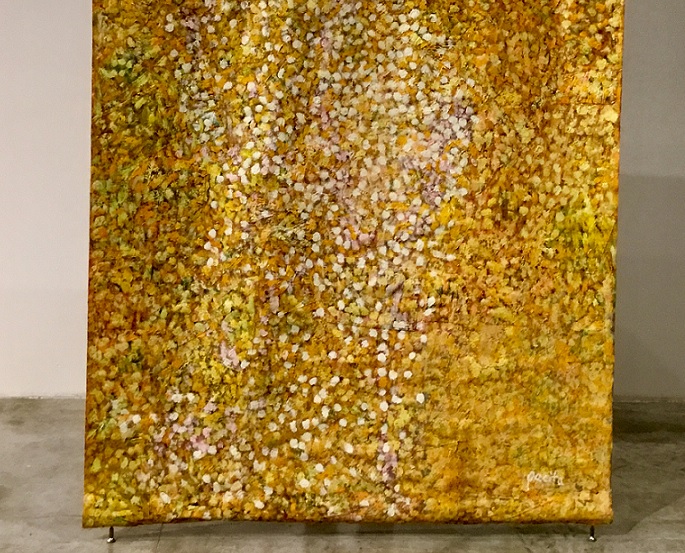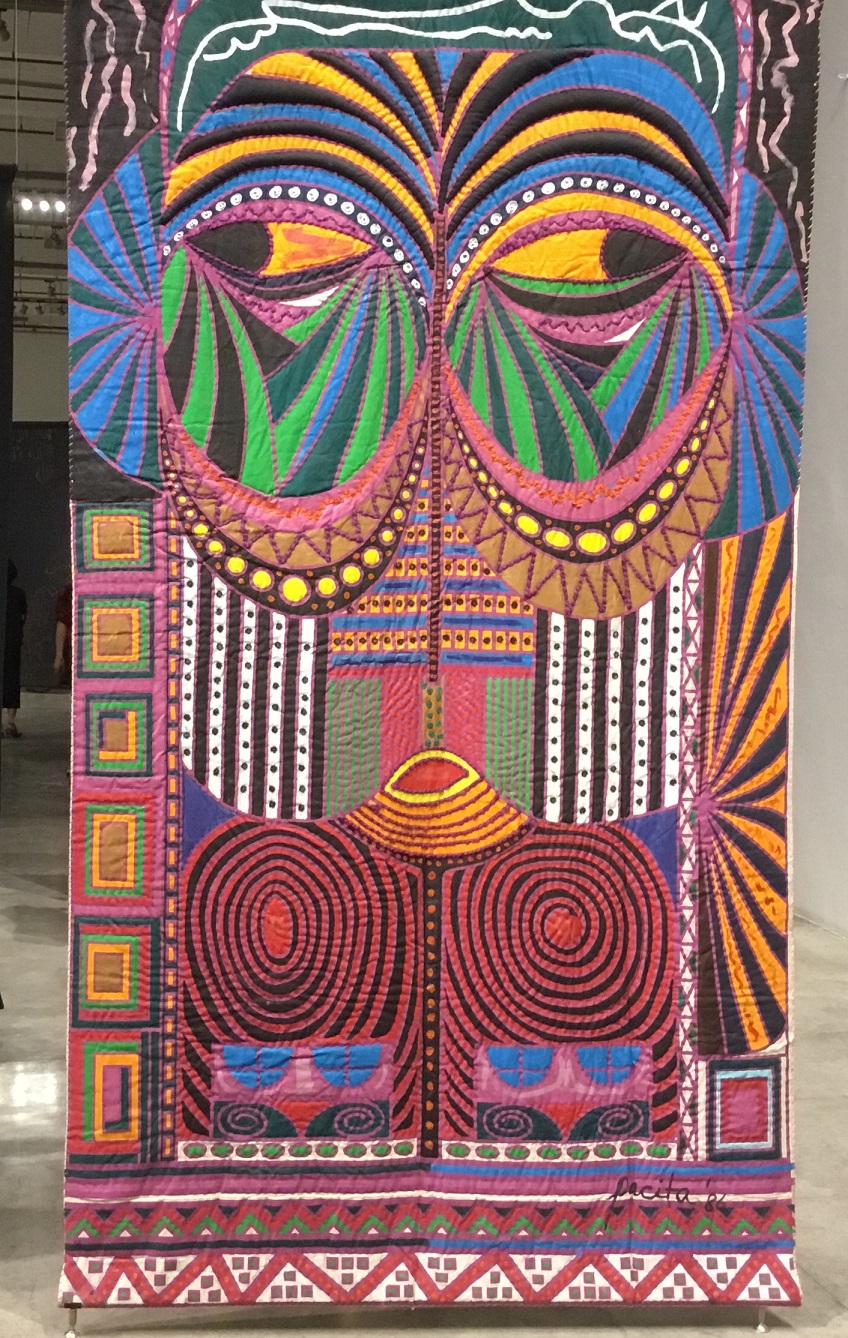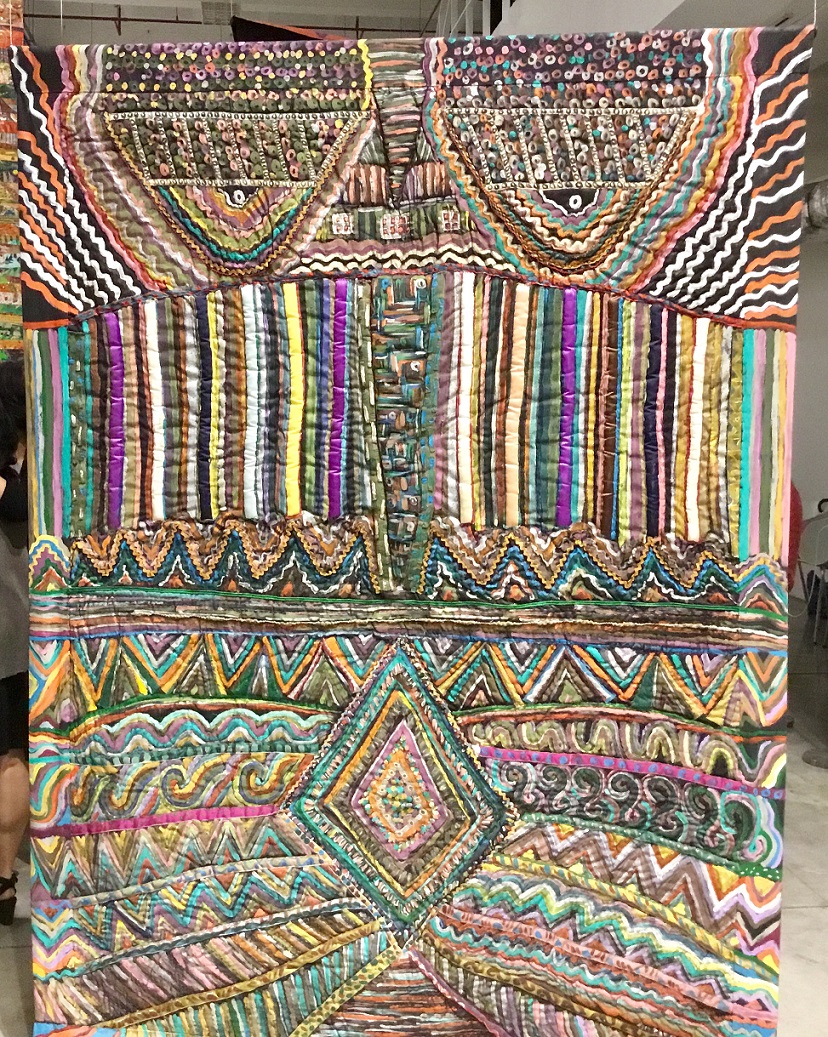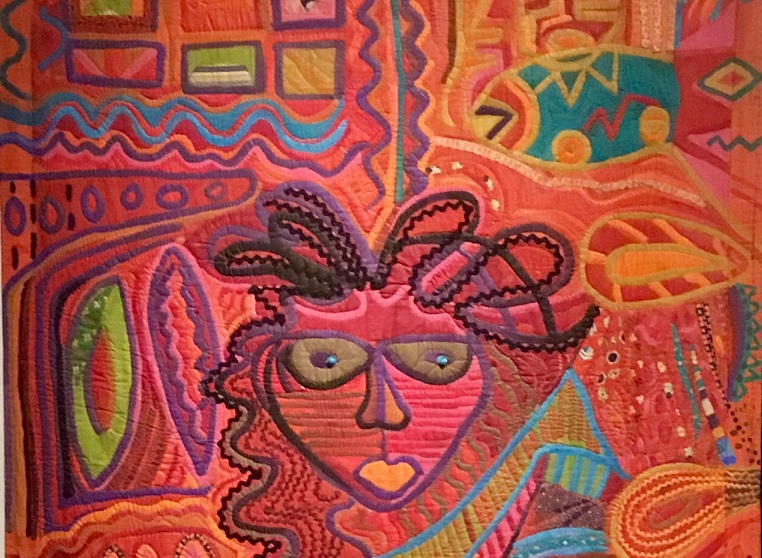
I have a million things to say
After 14 years of absence in Manila, 24 large trapunto paintings of Pacita Abad (1946-2004) are on display — hanging in the almost nine-meter ceiling of the Museum of Contemporary Art and Design (MCAD), De La Salle College of St. Benilde, for everyone to see, decipher, and ruminate.
Trapungere
Is it a quilt? A tapestry? A mixed media installation? Yes and no. Trapunto
means “to embroider”or “to quilt” in Italian, a quilting technique that uses at least two layers of cloth padded from the underside, and produces a raised surfacedesign outlined with running stitches, resulting in a three-dimensional effect.
Abad developed her signature style in 1981. In her paintings in oil or acrylic, some areas are stuffed and stitched by hand and other elements are applied such as printedtextile, plastic buttons, sequins, shisha mirrors, yarns, metallic ribbons, rickracks, and cowrie shells, adding dimensional layers to the painted canvas. Running stitches highlight the geometric designs of a work. Strong and vibrant colors dominate Abad’s paintings: yellow, orange, green, purple, red. But it is in how she combines colors that show her strength as an artist.

Bacongo III
Amidst the energetic swirl of colors and patterns, it becomes rather difficult to discern from a distance where the painting ends and where the applied elements begin. A much closer look would reveal layers of cloths and a collage of other materials applied on the main canvas that fuse with the painting itself, exuding a powerful sense tactility.It needs a lot of self-control to heed a basic museum rule, Do Not Touch!
You can follow the thick stitches of cloth swatches or the twists and turns of those rickracks attached to the canvas. Or almost feel the gritty edges of the sequins and the running stitches that radiate like rays of sunshine. You can also almost touch the thick curdles of paint smeared in circular motions and splashed around like crumbled feta cheese. The organic texture of Abad’s works and its multicultural appeal make them easy to win hearts and minds.
Included in the exhibition are abstract masks from Africa, a Maasai warrior, the Statue of Liberty, a series of underwater landscapes of dive points in the country such as Apo Reef, Dumaguete, Puerto Galera, and the Hundred Islands, created when Abad learned how to scuba dive, and some abstract works that include non-figurative trapunto and paintings of circles and dots done in the late 1990s and 2000s. For context, there is a timeline on the wall of the museum that outlines key points in Abad’s life that intersect with Philippine history.

Masai man
A reintroduction
The exhibition marks the reintroduction of Abad’s works in the country. Her last exhibition was in 2004, Circles in My Mind, at the Cultural Center of the Philippines, two months before her death. Today, Abad’s own technique of painted, stuffed, and stitched works would continue to define her as an artist.
It also reexamines Abad’s body of work and the roots of her artistic process, nurtured by the specificity of place and locality and life experience, cutting across class and geographical boundaries.
Born in Basco, Batanes, Pacita Abad studied painting at the Corcoran School of Art, Washington D.C. in 1975 and The Art Student League, New York City. She had travelled to more than 50, mostly third world countries, including Turkey, Afghanistan, Bangladesh, Sudan, Cambodia, Papua New Guinea, and India, which had made a deep impression on her artistic practice, seen in the appropriation of indigenous textile crafts and colors into her works. She received the Ten Outstanding Young Men (TOYM) award in 1984, the first woman to get it, a quite controversial decision at that time. She was also the first female artist to have a three-month residency at the Singapore Tyler Print Institute in 2003.

Pacita Sailing
Diagnosed with lung cancer in 2001, Abad finished a thousand paintings in the last three years of her life as well as the painting of the 55-meter long Alkaff Bridge in Singapore with 2,350 colorful circles. She had created more than 4,500 works in her 32-year career as an artist, managed by the Pacita Abad Art Estate, founded by Jack Garrity, the late artist’s husband.
Going out of the museum, I wonder how would she paint the Philippines today, with all its environmental neglect and destruction.
Pacita Abad: A Million Things to Say runs until July 1, 2018, MCAD, Dominga, Malate. Free admission.
